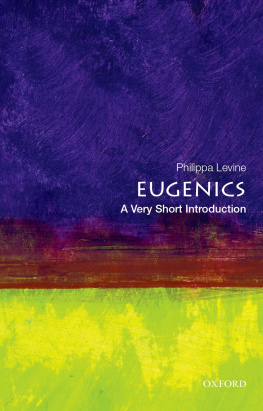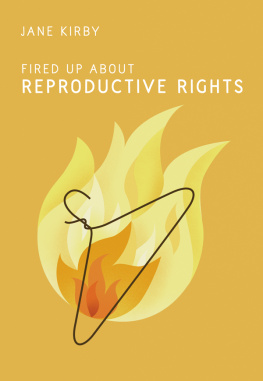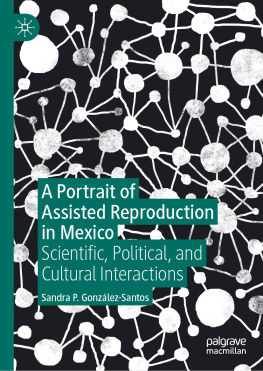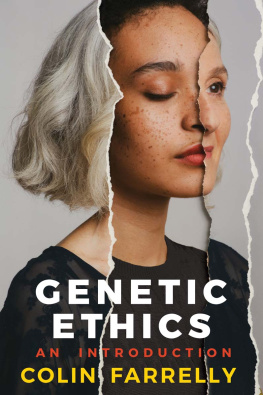The New Eugenics
The New Eugenics
Selective Breeding in an Era of Reproductive Technologies
JUDITH DAAR
Yale UNIVERSITY PRESS/NEW HAVEN & LONDON
Published with assistance from the Mary Cady Tew Memorial Fund.
Copyright 2017 by Judith Daar.
All rights reserved.
This book may not be reproduced, in whole or in part, including illustrations, in any form (beyond that copying permitted by Sections 107 and 108 of the U.S. Copyright Law and except by reviewers for the public press), without written permission from the publishers.
Yale University Press books may be purchased in quantity for educational, business, or promotional use. For information, please e-mail (U.K. office).
Set in Minion type by Newgen North America.
Printed in the United States of America.
ISBN 978-0-300-13715-6
Library of Congress Control Number: 2016944941
A catalogue record for this book is available from the British Library.
This paper meets the requirements of ANSI/NISO Z39.48-1992 (Permanence of Paper).
10 9 8 7 6 5 4 3 2 1
For Eric and our four sons,
Evan, Jared, Adam, and Ryan
with continuing love and gratitude
Contents
Preface
On a lovely autumn afternoon in November 2008, I lunched with two women whose personal struggle for parenthood had recently garnered tremendous public attention. The previous August, a much-awaited decision that would clear a procreative path for many was handed down by the California Supreme Court. Like so many high-profile cases, the legal saga endured by this couple, Guadalupe (Lupita) Benitez and Joanne Clark, began with an ordinary act, a simple visit to the doctor. This fateful medical appointment seemed a logical and practical starting point for Benitez and Clark, who understood that their shared desire to start a family could not be accomplished without reproductive assistance. What they did not realize at the time was that their status as lesbians would stand as a tremendous barrier in their pursuit of parenthood. They likewise did not appreciate that their struggle was not unique; many would-be procreators in the years before and since Lupita and Joanne began their legal journey have been deprived of medical assistance in conception because of personal characteristics unrelated to their capacity to lovingly carry and rear a child.
As the lunch menus were passed, the two women began to tell me their story, just like countless couples who relish reliving their mutual discovery. The women had been together for five years when they decided to start a family, electing for Lupita to carry the couples child. Venturing, at first, lightly into the world of assisted reproductive technologies (ART), Lupita began trying to conceive using at-home insemination with sperm purchased from a commercial bank. Low-tech and relatively low-cost, this DIY method of assisted conception is also linked to somewhat low success rates. When no pregnancy ensued after months of self-inseminations, Lupita sought medical assistance.
From an access-to-care perspective, Lupita considered herself fortunate because her employer-sponsored health insurance provided coverage for infertility, a rare benefit for insurance plans. The sole ART provider in her insurance network was a fertility clinic in the San Diego area, a reasonable distance from the couples home. At an initial visit attended by both women, the treating physician, Dr. Christine Brody, performed a history and physical exam on Lupita. At that same appointment, according to court records, Brody also told the patient and her partner that should any procedures beyond simple insemination become necessary, she would be precluded from providing further treatment because of her religious beliefs, which disapproved of invasive assisted conception for individuals occupying Lupitas social situation. At least one other doctor in the group was reported by Brody to hold similar views.
At this point in the story the women smiled at each other, anticipating the shock that would predictably come over my face as they presented a nugget that was not discussed by the California Supreme Court. According to the couple, the San Diego clinic had adopted a nondiscrimination policy that represented its physicians did not and would not discriminate against any patient based on marital status or sexual orientation. Perhaps assured that Dr. Brody and the other physicians in the practice would abide by this policy, Lupita continued to seek treatment at the clinic. After months of unsuccessful inseminations, it became clear that Lupita would require more invasive treatment in the form of intrauterine insemination (IUI), in which sperm is injected directly into the uterus via a catheter. When the treatment plan turned toward IUI, as warned, Lupita was told that the physicians religious objections precluded further involvement in her care. She recalls this moment as utterly horrifying and humiliating, causing her to question her worth as a potential parent and a woman. As the pair recounted this part of the story, the dynamics of their close relationship came into clearer focus; when a sobbing Lupita returned home to share this news, Joanne became outraged and immediately sprang into action.
The eight-year legal and medical odyssey that followed ultimately yielded a happy ending for the Benitez-Clark family. In a unanimous decision, the California Supreme Court ruled that the states civil rights laws prohibiting discrimination on the basis of sexual orientation did not contain an exemption for medical providers assertions of religious freedom. Doctors and other purveyors of public goods and services in the Golden State are governed by Californias relatively robust network of anti-discrimination laws, free to voice but not impose their religious-based objections in the course of their professional activities. The favorable ruling thrilled Lupita and Joanne, but its practical impact had been realized several years earlier. After being turned away by the San Diego clinic, Lupita sought treatment with a willing out-of-network provider who recommended she undergo in vitro fertilization (IVF). This treatment proved quite effective, as evidenced by the supply of baby photos Lupita and Joanne proudly paraded around the table. A son, followed by twin daughters, kept the couple very busy and enormously grateful for their cherished clan.
Meeting Lupita and Joanne was both inspiring and troubling. I wondered how many other prospective parents were denied the tools of family formation because of who they were, not whether they were good candidates for medical intervention. After all, having toiled my entire academic career in the ART field, I understood that when an individual or couple cannot reproduce through natural conception, their path to parenthood runs through a medical office in which providers are empowered to accept or turn away treatment seekers largely at their own discretion. This power is enormous and, I believe, mostly wielded in a fair and legal manner. But when outlier behavior results in procreative deprivation, grave harms befall individual patients and, I argue in the pages that follow, providers, children, and society in ways that should be recognized and can be addressed.
Withholding the means of reproduction is not limited to physician behavior. The growth and success of reproductive technologies, accounting for three of every one hundred babies born in the United States today, have prompted lawmakers to introduce and occasionally pass legislation that expressly or indirectly limits access to ART by certain individuals. These formal legal barriers, combined with individual and practice-wide physician conduct, coalesce to suppress access to assisted conception for those who have historically experienced a devaluation of their reproductive worth. These categorical subductions arise from socioeconomic status, race, ethnicity, geography, sexual orientation, gender identity, marital status, and disability, with each finding at least a modicum of support in the prevailing system of ART allocation in the United States. This wholesale, state-sanctioned suppression of procreative opportunity among disfavored groups recalls the practices and tenets of the American eugenics movement, a multi-decade period beginning at the dawn of the twentieth century in which tens of thousands of Americans were forcibly robbed of their reproductive capacity at the hands of misguided genetic enthusiasts certain of the inescapable force of heredity.
Next page





